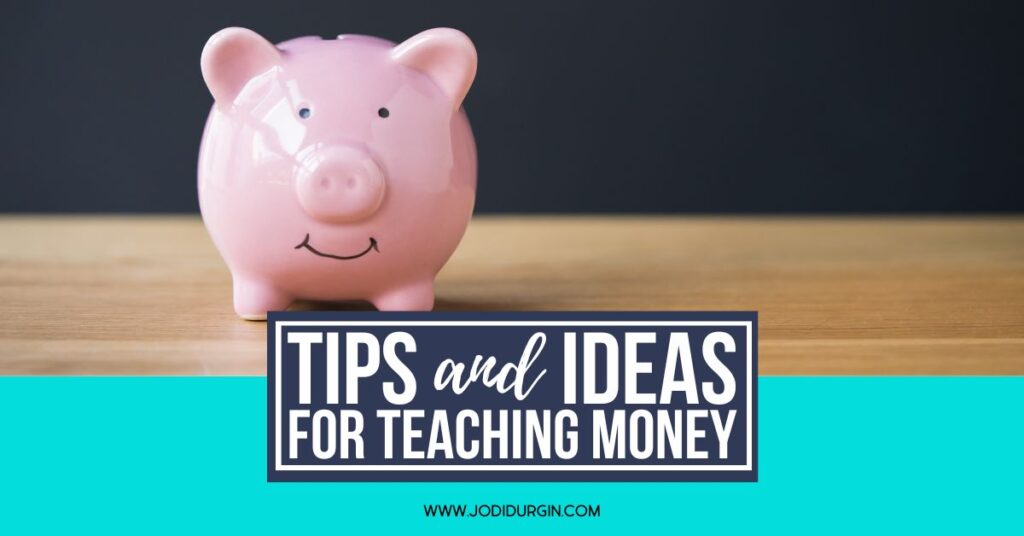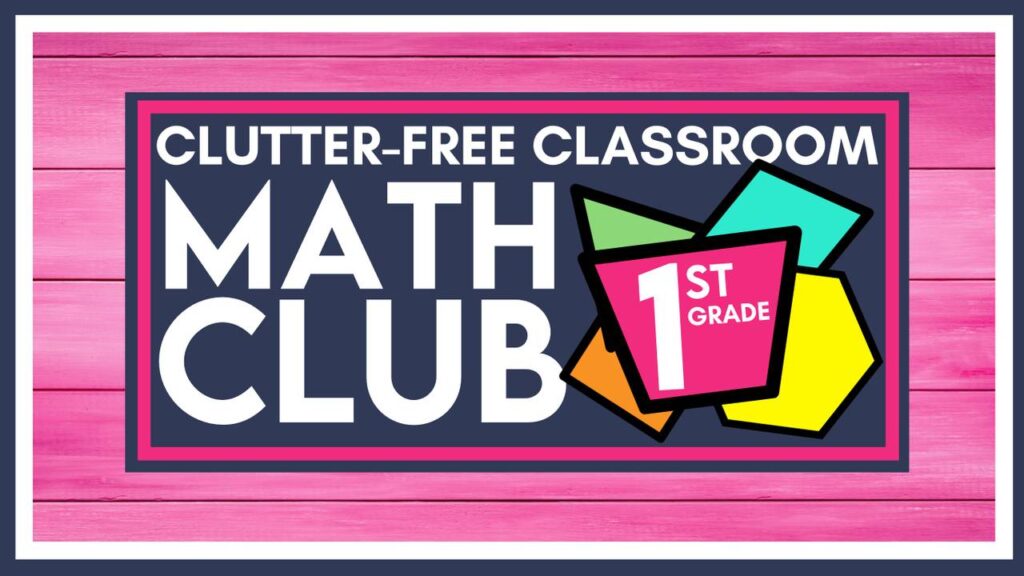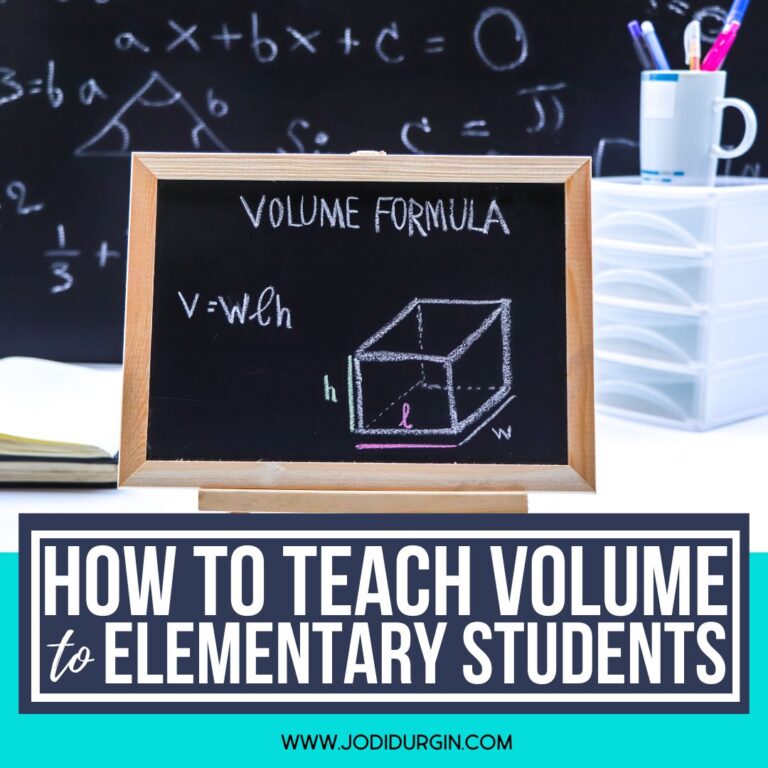If you are an elementary teacher looking for tips and ideas for how to teach money, then you found the right place! Learn what money is, why it’s important, what your students need to know, and get 5 helpful tips for teaching it in a fun and engaging way. Read all about teaching money below!

What is Money?
Money is a medium of exchange for goods or services. In the United States, our money system is made up of dollar bills, quarters, dimes, nickels and pennies. We use the $ symbol to represent the dollar and the ¢ symbol to represent cents.
Why is Money Important?
It is important for students to learn about money because money skills are an important part of navigating through everyday life. In addition, by learning about money, students will develop a genuine respect for the value of the money they earn.
What Money Skills Do Students Need to Know?
Below are the Common Core and TEKs standards that relate to money that define what students should be able to do by the end of the school year.
Common Core Standards
Below are the CCSS related to how to teach money.
2nd Grade
- Solve word problems involving dollar bills, quarters, dimes, nickels, and pennies, using $ and ¢ symbols appropriately. Example: If you have 2 dimes and 3 pennies, how many cents do you have? (2.MD.C.8)
TEKS
Below are the TEKS related to how to teach money.
1st Grade
- Identify U.S. coins, including pennies, nickels, dimes, and quarters, by value and describe the relationships among them. (1.4.A)
- Write a number with the cent symbol to describe the value of a coin. (1.4.B)
- use relationships to count by twos, fives, and tens to determine the value of a collection of pennies, nickels, and/or dimes (1.4.C)
2nd Grade
- Determine the value of a collection of coins up to one dollar; (2.5A)
- Use the cent symbol, dollar sign, and the decimal point to name the value of a collection of coins. (2.5B)
3rd Grade
- Determine the value of a collection of coins and bills. (3.4C)
5 Tips for How to Teach Money
Below are 5 helpful tips for teaching money to elementary students.
1. Read Aloud Picture Books that Teach Money
Reading aloud picture books is a great way to integrate literacy into your math block and present information in a different way. Our favorite picture books for teaching money are Alexander, Who Used to Be Rich Last Sunday by Judith Viorst, A Dollar, a Penny, How Much and How Many by Brian P. Cleary and The Coin Counting Book by Rozanne Lanczak Williams. Check out the full list of math picture books we recommend!
2. Offer Hands On Learning Experiences
Hands-on math experiences help students make connections, remember their learning, and develop a deep conceptual understanding of the content. You can make any lesson interactive and engaging by offering math manipulatives. Our favorite math manipulatives for teaching money are U.S. coins and bills and cash registers.
3. Explicitly Teach Related Math Vocabulary
Teaching math vocabulary is essential for all students, but it is especially beneficial for students who speak English as a second language and students with learning differences. Key vocabulary terms for money are dime, dollar bill, nickel, penny, quarter, bill, $ (dollar sign), ⊄ (cent sign), total value, coins, money, dollar sign, cent, decimal point and dollar.
4. Give Students Opportunities to Apply Money to the Real World
Learning becomes more meaningful when students understand how it connects to the real world. Students are more engaged and invested in their learning. Some examples of ways we use money in the real world are to pay for services, purchases, food, loans and much more! Project based learning and word problems are examples of opportunities for students to apply their learning to real world situations.
5. Encourage Parent Involvement
Parent participation in math is essential because it impacts students’ attitude toward math, proficiency levels this school year, and future success in their math education. Be sure to keep communication open with families and share ways they can support their children in their math learning. Some examples of ways they can practice money at home are using coins and dollar bills to purchase a toy in the store, buy gas for the family car and to pay for a haircut.
In closing, we hope you found this information about how to teach money helpful!











